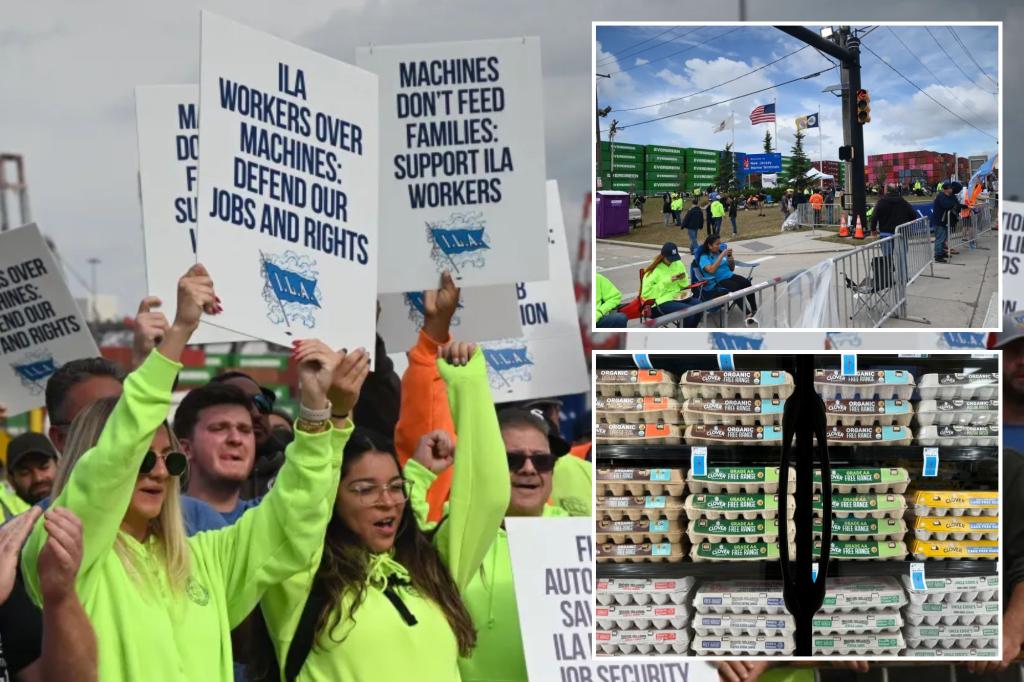The International Longshoremen’s Association strike began on Monday, impacting East Coast and Gulf Coast ports that handle about half of seaborne trade to the U.S. These ports are key hubs for food imports from regions such as South America and Central America, with two-thirds of bananas arriving at these ports. While the U.S. Department of Agriculture (USDA) released a statement saying that food prices are not expected to be significantly affected in the near term due to the strike, perishable food items could potentially see price increases or shortages as a result.
The USDA stated that they do not anticipate shortages in the near future for most items thanks to the smooth movement of goods through ports and strong domestic agricultural production. However, meat and poultry items that are exported through the affected ports could see pressure on farmers and food processors. Available storage space and redirection of products to alternative domestic and international markets could help alleviate some of these impacts, but the situation is being closely monitored for further downstream effects.
Economics professor Alexander Field mentioned that perishable food items would be among the most sensitive categories of products to see price increases or shortages due to the strike. He also noted that if the strike were to endure, it could lead to shortages, which would increase prices and potentially impact the inflation rate, unemployment rate, and GDP growth. The availability of perishable items, such as bananas, is particularly at risk due to their limited shelf life.
Operations and analytics professor Volodymyr Babich from Georgetown University’s McDonough School of Business stated that short-term disruptions caused by the strike could be managed by retailers with existing inventory, but prolonged disruptions could lead to significant challenges. While businesses can reroute shipments or use alternative means like air freight, there are still risks to supply chains. Babich also mentioned the potential for opportunistic price increases by retailers, panic buying by businesses and consumers, and hoarding of products that are not directly impacted by the strike.
The strike at U.S. ports could cause congestion and disruptions that reverberate throughout global supply chains, potentially leading to opportunistic price increases, panic buying, and hoarding by businesses and consumers. Businesses may face challenges in meeting demand for extended periods, especially for perishable items with limited shelf lives. While rerouting shipments or using alternative means of transportation like air freight are options to manage disruptions, there are still significant risks to supply chains that could have far-reaching effects.
Overall, the impact of the strike on food prices and availability is expected to be minimal in the near term, according to the USDA. However, the potential for shortages and price increases on perishable food items remains a concern, as well as the broader implications on the inflation rate, unemployment rate, and GDP growth if the strike were to persist. Businesses are advised to monitor the situation closely and consider contingency plans to manage potential disruptions to their supply chains.













